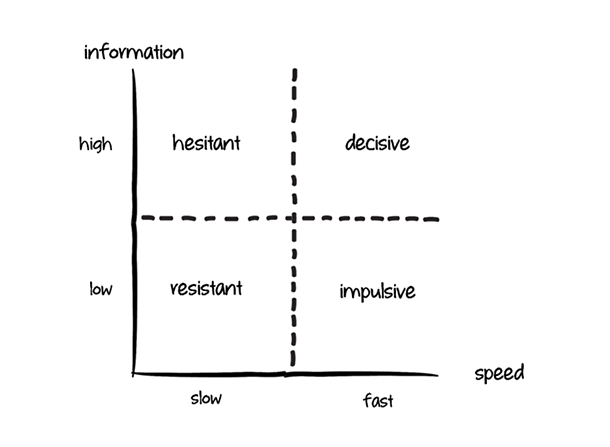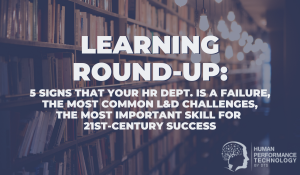The Real Secret to Smarter Decisions (It’s Not What You Think)
In the last few weeks, I’ve had the opportunity to work with two large organisations in Australia – a healthcare provider and a professional services firm – helping them with their strategic planning for the next five years. Both of them wanted to know how to make smart decisions for the future, even when the future is uncertain and ever-changing.
This issue faces us all, regardless of size and industry, because we all have to make plans in a fast-changing world. And a key factor in your success is the way you make decisions – individually, in your teams, and in the entire organisation.
What’s your decision-making style?
As a futurist, my job is not to predict the future, but to help you make smart decisions now, even when we can’t predict the future. As a result, I’m fascinated by how people make decisions in this “VUCA” (volatile, uncertain, complex, and ambiguous) world.
Broadly, you can classify decision-making styles into four categories.
First, there are the resistant people, who simply refuse to make any decisions. They are like the three monkeys who “See no evil, hear no evil, do no evil”, and shut themselves off from the world, hoping their problems will disappear. That sounds extreme, but I bet you know people in your organisation who act that way!
Next are the impulsive people, who live by the motto, “A fast decision is a good decision!” The problem is they often make rash decisions because they don’t have enough information to make an informed decision. Speed alone is not enough!
The third kind takes the opposite approach: They are hesitant and slow to make a decision, reluctant to commit until they have “all” the information. The trouble is, they can never get all the information, so they never make a decision. Or, if they do, it’s too late and the opportunity has passed them by.
Finally, the fourth – and best – kind is the decisive person, who gathers enough information to make an informed decision, and then makes a decision.
Here’s a summary of the four types:

How can you be more decisive?
Of course, the trick is to know when you have enough information! How do you know when you have enough information to make an informed decision, but not wait so long that you miss the opportunity?
You might think there’s no right answer to this question, because it varies depending on the situation.
But that’s not true. There is a right answer.
37.
Yep, 37! That’s the point at which you should stop gathering information and start making decisions.
In computer science, this is known as the “Optimal Stopping” problem, and it has a (mathematically) proven “best” solution. You spend 37% of your time just gathering information, and then choose the next option that’s better than any of those you have seen so far.
Here’s an example …
Suppose you’re recruiting a new team member, and you decide to interview 100 candidates. You know the most talented people have a choice of jobs, so when you find the best person, you want to grab them immediately.
But how do you know when you’ve found the “best” person?
If you’re impulsive and you stop after, say, 5 candidates, you probably haven’t reached the best person yet, because they are more likely to be in the other 95.
On the other hand, if you’re hesitant and wait until you’ve interviewed 95 candidates, the best was probably among them, but you passed them by and they would have already been snatched up by somebody else.
The Optimal Stopping decision-making process says you should interview and evaluate the first 37 candidates (without choosing any of them), and then choose the very next candidate who’s better than those first 37.
This doesn’t guarantee you’ll get the best person, but it maximises your chances – according to computer science (Trust me – I have a Computer Science degree).
Most people don’t make decisions this way.
Just to be clear, I’m not suggesting you should use this process for every decision you make. That just wouldn’t make any sense.
I’m sharing this to make the point that most people just don’t make decisions this way. They haven’t given much thought to their decision-making processes, and rely on vague, hand-waving processes like gut feel, intuition, past experience, advice from peers, and so on. The trouble is, most of those strategies just don’t work anymore. They might have worked when the world was slower, more stable, and more predictable – but that’s not the world we live in now.
If you want to make smart decisions now for success in the future, you need to think differently!

About the Author
Gihan Perera is a futurist, conference speaker, consultant, and author of “The Future of Leadership”, “Disruption By Design”, and 10 other books. Since 1997, he has worked with business leaders, thought leaders, entrepreneurs, and other change agents – helping them with their strategy for thriving in a fast-changing world.
This post originally appeared on Gihanperera.com and has been republished with permission.
Topics:
Smarter ThinkingGuest Author
Occasionally we invite guest authors to share fresh content and ideas in our Knowledge Centre. Each post has a unique "About the Author" section so that you can learn more about each contributor.



We Would Like to Hear From You (0 Comments)